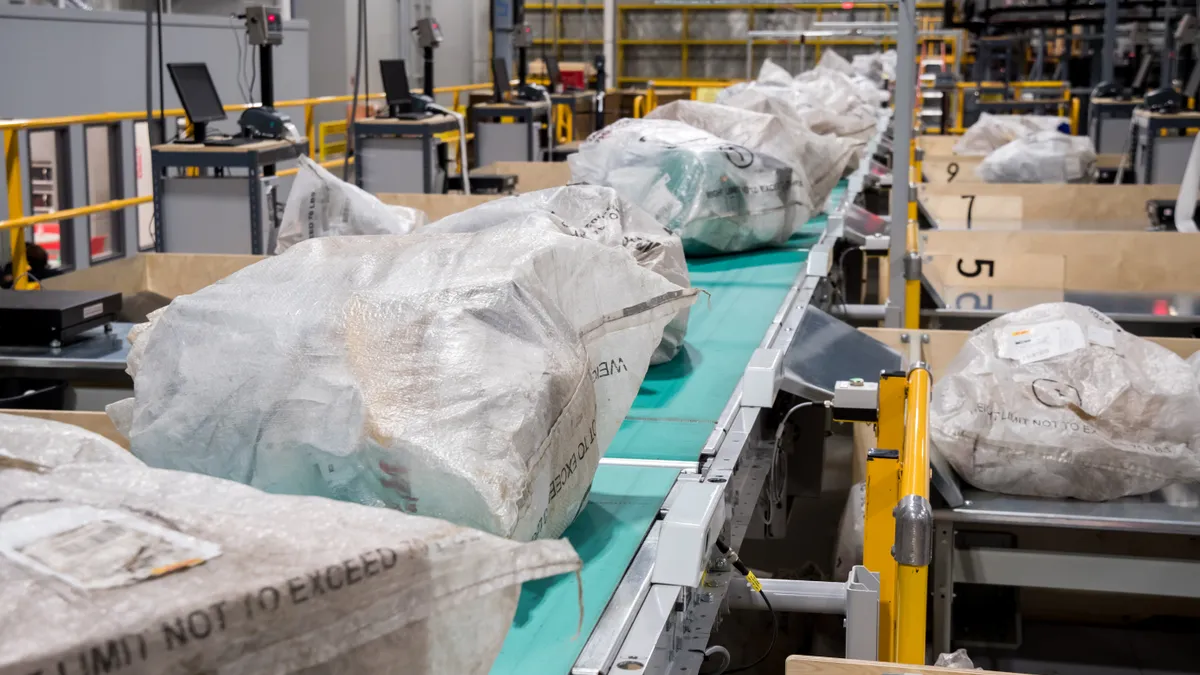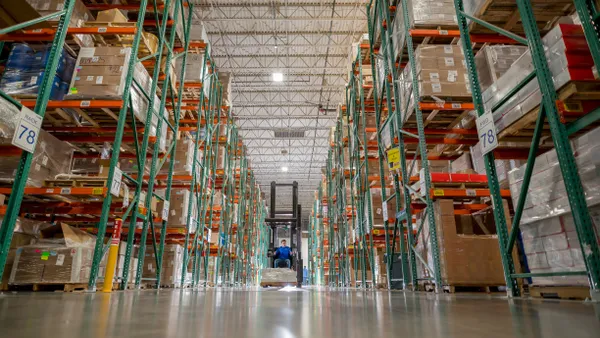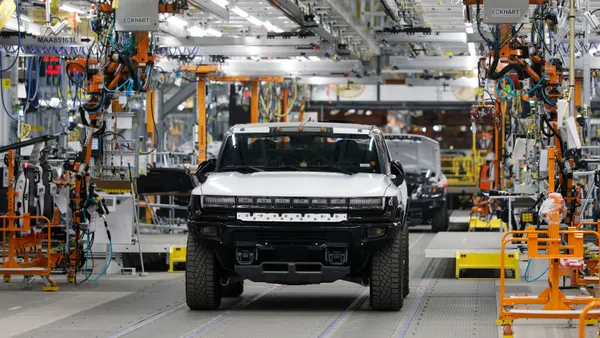Dive Brief:
- DHL eCommerce Solutions is expanding the square footage of its U.S. distribution center network by 70% over the next five years to catch up to elevated B2C demand, the DHL division announced earlier this month.
- Beyond additional building space, the $300 million investment includes adding more automation to its facilities to process volume quicker. Two loop sorters will be installed at DCs in Chicago and Cincinnati, and 26 line sorters will be added to its 19 facilities across the country, Spratt said.
- The bulk of the expansion will be implemented "probably sooner rather than later just given the growth we're seeing," said Lee Spratt, CEO of DHL eCommerce Solutions' Americas region.
Dive Insight:
Companies servicing e-commerce merchants are making hefty investments in their networks to raise capacity after the COVID-19 pandemic accelerated online shopping activity. DHL's $300 million commitment show the company expects volumes to remain elevated for the long haul, Spratt said.
"Last year's peak season we had to add a lot of additional annex buildings, additional labor, additional costs associated with that, and so it's really about building out our business to the volume levels we're currently running at, and what we expect in the future," Spratt said.
DHL eCommerce Solutions is expecting peak season volumes to grow 35% YoY, Spratt said, and the company will not start any new customers in its network after Oct. 1 in preparation. To handle the surge, it has hired 800 holiday employees and aims to hire 2,000 more. The company's peak is traditionally the first and second weeks of December, he said.
But the labor market is a challenging one for companies looking for warehouse workers. DHL is competing with carriers like FedEx, UPS and the Postal Service, who are all attempting to hire tens of thousands of workers to process parcels. FedEx Ground is already rerouting 600,000 packages a day due to staffing shortages at its hubs.
"It is almost impossible to find workers," said Jeremy Tancredi, a partner in West Monroe's Operations Excellence practice specializing in supply chain management, earlier this month. "We know we have a lot of clients who are running north of 50% temp labor right now, which is just a crazy high number."
Labor shortages underscore the importance of automation for distribution centers to keep service levels high.
For DHL eCommerce Solutions, two loop sorters are already active at facilities in Newark, New Jersey, and Los Angeles, Spratt said. These machines process 50,000 pieces an hour and result in a 30% labor reduction at a typical facility.
"If you think about a building that's got 400 blue-collar workers in it and you can reduce that by 30% with a loop sorter, that's a pretty significant advantage," Spratt said.
The smaller line sorters process around 15,000 pieces an hour, and the company has 25 installed throughout its network currently. Whether a building has loop sorters or line sorters depends on its size, but some larger facilities have both, according to Spratt.
Although warehouse automation makes headlines, it's not widespread yet. According to MHI's annual report, 38% of supply chain and manufacturing leaders reported using automation and robotics in 2021. This was up slightly from 35% of respondents in 2016.
This story was first published in our weekly newsletter, Supply Chain Dive: Operations. Sign up here.














